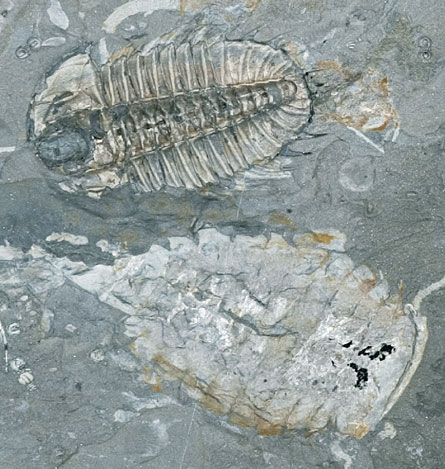A new effort to date the early history of modern animals finds a lot of evolutionary dawdling.

The last common ancestor of all living animals probably arose nearly 800 million years ago, a multidisciplinary research team reports in the Nov. 25 Science. From that common ancestry, various animal lineages diverged and evolved on their own paths. Yet the major animal groups living today didn’t arise until roughly 200 million years later, in an exuberant burst of forms preserved in fossils during what’s called the Cambrian explosion.
“There’s a deeper history that’s been missing from the fossil record,” says study coauthor Kevin Peterson of Dartmouth College. He and his colleagues have been pushing back that date for a last common ancestor, and now, he reports, the analysis has the broadest reach yet. “We show that animals evolved quite a bit before they show up in the fossil record.”
This work updates the notion of a long evolutionary lag, when much of the basic biological toolkit was already in place for a later surge of new body forms, says paleontologist and study coauthor Douglas Erwin of the National Museum of Natural History in Washington, D.C., and the Santa Fe Institute.
“The Cambrian explosion is like the industrial revolution,” Erwin says. Inventions that would later be important for a major shift in technology — or, in this case, genetic novelties important for evolution — appeared long before they played a role in widespread changes that had a major impact on life.
For understanding animal origins, the new paper “is really worthwhile as it stands back and tries to make sense of the whole picture,” says James Valentine of the University of California, Berkeley, who studies animal evolution.
Just what happened with animals during that Cambrian explosion remains one of the more celebrated puzzles in the history of life. Charles Darwin mused over how diverse animal forms appear suddenly (geologically speaking) without much in the way of precursors. Darwin’s answer, as Erwin puts it, was that paleontologists just needed to look harder.
More than a century of hard looking has turned up some signs, fossils as well as traces of biological chemistry, of enigmatic animal life before the Cambrian period began about 541 million years ago. Yet the relationship to modern animals often is not clear. Theories themselves have exuberantly exploded in number and form.
For the new study, Erwin and the rock side of the team updated the scorecard on the earliest fossil occurrences with recent fossil finds and the current thinking on dates of rock layers. On the molecular side, Peterson and his colleagues expanded the family tree to cover seven genes from 118 different kinds of living animals. Fossils provided dates for a scattering of branch points in the tree, allowing researchers to estimate time from rates of change.
Combining fossil dates and the DNA analysis, Peterson, Erwin and their colleagues conclude that the basic genetic tools for fancy animal bodies arose long before a surge of evolutionary innovation around the Cambrian period gave rise to modern animal forms.
During that 200 million-year-plus run-up to the Cambrian explosion, animals did evolve more diverse cell chemistry to regulate basic genes, and the environment changed. But Peterson attributes much of the Cambrian rise of modern animal forms to changes in the interactions among organisms themselves. “You see an evolutionary explosion, if you will, because animals are eating other animals for the first time,” he says.
The paper’s discussion of toolkit genes and the diverse cell chemistry that arose to orchestrate them overlooks some possibly important complexity, objects molecular biologist Mark Q. Martindale of the University of Hawaii’s Kewalo Marine Laboratory. At least 30 percent of the genes of animals analyzed so far have no recognizable similar gene in another species. “These so-called orphan genes could have a tremendous amount to do with diversification of animal lineages, but people just pooh-pooh these differences and focus on the things that are shared,” he says.
Some of the relationships in the evolutionary tree “have been and will continue to be controversial,” says evolutionary biologist Casey Dunn of Brown University in Providence, R.I., who wasn’t involved in the research. “But the point of the tree isn’t the relationships themselves — it is some key dates.”






